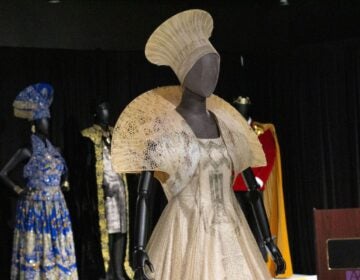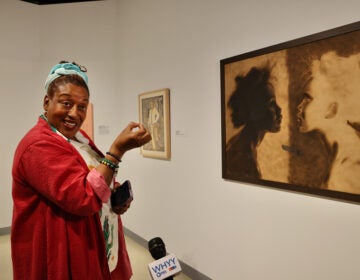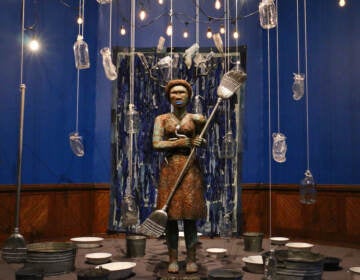Sex! Pop! Race! ‘Black Pulp!’ comes to Philadelphia African American Museum
The "Black Pulp" traveling exhibition about high-brow and low-brow black art comes to the African American Museum in Philadelphia.
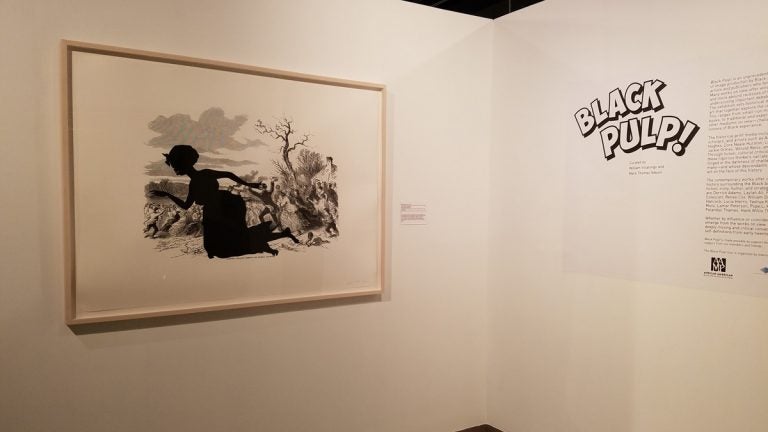
A piece by Kara Walker at the "Black Pulp!" exhibit at the African American Museum in Philadelphia. (Peter Crimmins/WHYY)
From hard-boiled dime novels and a Blaxploitation movie poster, to self-portraits of contemporary artists as super heroes, “Black Pulp!” at the African American Museum in Philadelphia features populist imagery by African-Americans, often intended for African-Americans.
The show traces the last 100 years of black art, both high-brow and low-brow.
It starts in the Harlem Renaissance of the 1920s, a time when fierce debates arose about the image of the modern African-American — either a person of poise and refinement, or a figure more earthy and street-wise.
Several glass vitrines in the 3rd floor of the AAMP feature historic printed ephemera featuring both Art Deco graphic design and caricatures from newspaper comic strips that embraced that debate.
“In our culture today, so often when we think about caricature, we think it has a diminutive, or a negative term,” said co-curator Mark Thomas Gibbon, an associate professor at Yale University. “But it used to mean some kind of essentialism. It could be quite positive, a caricature of someone.”
“Black Pulp!” juxtaposes those historic pieces of printed ephemera with work by more contemporary artists who use the simplicity of caricature to express complex ideas of identity. The first image visitors encounter is by celebrated artist Kara Walker, who superimposed an oversized silhouette of an African-American woman dressed in slave’s garb, against a reproduction woodcut of a scene from the Civil War South.
Around the corner, artist Renee Cox dressed as her alter-ego super hero, Raje, seated on the crown of the Statue of Liberty. The image from 1994 is simultaneously whimsical and strong.
Deeper into the show, a lithograph by the now deceased artist Robert Colescott, “Lock and Key” (1989) shows a pair of lovers embracing, bonded by their passion and by slave shackles to their neck and wrists.
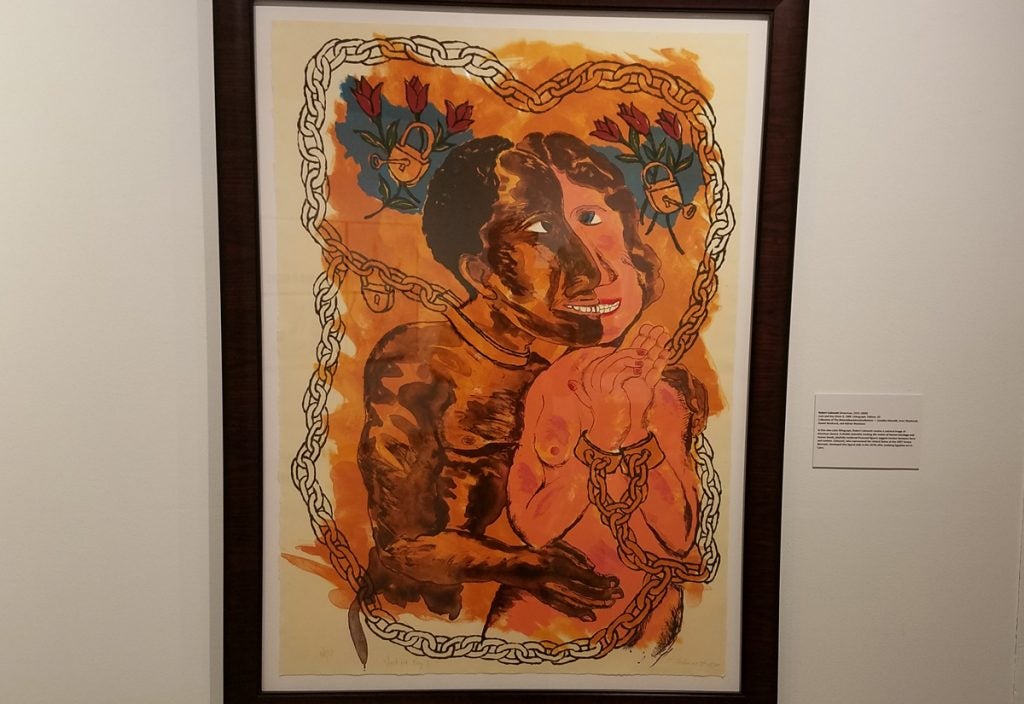
“Colescott is in that vein of playing an edge just enough to get you excited,” said co-curator William Villango, an artist on the faculty of Cooper Union in New York.
“It’s kind of a dance of the grotesque,” said Gibbon. “You can look at it, like, ‘Maybe I shouldn’t be looking at this with other people around.’ But you’re looking at a truth, you’re looking at a shared truth.”
“Black Pulp!” is on display until the end of April.
WHYY is your source for fact-based, in-depth journalism and information. As a nonprofit organization, we rely on financial support from readers like you. Please give today.



